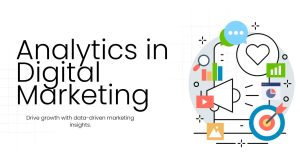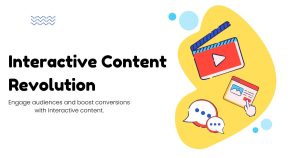How Emotional Marketing Turns Brands into Must-Haves

People don’t buy products. They buy feelings, dreams, and solutions to their deepest frustrations. While traditional marketing focuses on features and benefits, emotional response marketing taps into the psychological triggers that actually drive purchasing decisions.
The most successful brands understand this fundamental truth. Apple doesn’t sell computers—they sell creativity and innovation. Nike doesn’t sell shoes—they sell achievement and self-empowerment. These companies have mastered the art of connecting with customers on an emotional level, creating loyalty that transcends price comparisons and competitor offerings.
Studies consistently show that emotional campaigns perform significantly better than rational ones. When brands make customers feel something genuine, those customers don’t just buy once—they become advocates, sharing their experiences and bringing others into the fold.
This comprehensive guide explores how emotional response marketing works, why it’s more effective than traditional approaches, and how you can implement it to transform your brand’s relationship with customers.
What Is Emotional Response Marketing?
Emotional response marketing is a strategic approach that prioritizes emotional connection over logical persuasion. Instead of simply listing product features or competitive advantages, this method focuses on understanding and addressing the emotional needs of your target audience.
The strategy operates on the principle that emotions drive decision-making, while logic justifies those decisions after the fact. When customers feel understood, valued, or inspired by your brand, they develop an emotional attachment that influences their purchasing behavior and brand loyalty.
This approach differs from traditional marketing in several key ways. While conventional advertising might emphasize price points, technical specifications, or company credentials, emotional response marketing centers on customer feelings, experiences, and aspirations.
Successful emotional marketing campaigns identify specific emotions relevant to their audience—whether that’s security, excitement, belonging, or achievement—and craft messages that genuinely resonate with those feelings.

The Psychology Behind Emotional Decision-Making
Human brains process emotional information faster than logical data. The limbic system, which controls emotions and memory, evaluates situations and triggers responses before the neocortex—responsible for rational thinking—fully processes the information.
This neurological reality explains why customers often make purchasing decisions based on gut feelings, then use rational reasoning to justify their choices afterward. When marketing speaks to emotions first, it aligns with natural cognitive processes.
Fear, joy, trust, surprise, and anticipation represent some of the most powerful emotions in marketing contexts. Fear motivates people to avoid negative outcomes, while joy creates positive associations with brands and products. Trust builds long-term relationships, surprise captures attention, and anticipation maintains engagement.
Understanding emotional triggers allows marketers to craft messages that feel authentic and compelling. However, this approach requires genuine empathy and careful research—customers can quickly detect manipulative or inauthentic emotional appeals.
Core Emotional Triggers in Marketing

Security and Safety
Security-focused marketing addresses concerns about protection, stability, and risk reduction. Insurance companies, security systems, and financial services often emphasize peace of mind and protection from uncertainty.
Messages highlighting safety don’t necessarily create fear—they can also emphasize confidence, reliability, and trustworthiness. Customers want assurance that their choices will protect what matters most to them.
Belonging and Social Connection
Humans have fundamental needs for community and acceptance. Brands that successfully tap into belonging create spaces where customers feel understood and welcomed.
Social media campaigns, user-generated content, and community-building initiatives often leverage this emotional trigger. When customers see others like themselves using and enjoying products, they feel confident about joining that community.
Achievement and Success
Achievement-oriented marketing appeals to customers’ desires for personal growth, accomplishment, and recognition. This approach works particularly well for education, fitness, career development, and luxury goods.
Rather than simply promising results, effective achievement marketing helps customers envision themselves succeeding and feeling proud of their progress.
Nostalgia and Familiarity
Nostalgic marketing creates emotional connections through shared memories and cultural references. This approach can evoke comfort, happiness, and trust by connecting current offerings to positive past experiences.
Seasonal campaigns, retro product designs, and references to childhood memories often utilize nostalgic emotional triggers effectively.
Building Authentic Emotional Connections
Authenticity forms the foundation of successful emotional response marketing. Customers have sophisticated BS detectors—they quickly identify and reject messages that feel manipulative or insincere.
Research your audience deeply before crafting emotional appeals. Understand their genuine concerns, aspirations, and values through surveys, interviews, and behavioral data analysis. This research should reveal authentic emotional triggers rather than assumed ones.
Storytelling provides one of the most effective vehicles for emotional connection. Share customer success stories, company origin stories, or narratives that illustrate your brand values in action. Stories create emotional experiences that facts and figures cannot match.
Visual elements support emotional messaging through color psychology, imagery, and design choices. Warm colors might evoke comfort and energy, while cool colors suggest trust and professionalism. Images of real people experiencing genuine emotions often outperform stock photography.
Consistency across all touchpoints reinforces emotional connections. Your website, social media, customer service, and product packaging should all reflect the same emotional tone and brand personality.
Measuring Emotional Marketing Success
Traditional metrics like click-through rates and conversion percentages remain important, but emotional response marketing requires additional measurement approaches.
Brand sentiment analysis tracks how customers feel about your brand over time. Social media monitoring tools, customer feedback surveys, and review analysis can reveal emotional responses to your marketing efforts.
Customer lifetime value often increases significantly with successful emotional marketing. When customers feel emotionally connected to brands, they make repeat purchases more frequently and recommend products to others.
Net Promoter Score (NPS) measures customer loyalty and willingness to recommend your brand. High NPS scores often correlate with strong emotional connections between customers and brands.
Engagement metrics on social media and content platforms indicate emotional resonance. Comments, shares, and time spent with content suggest that messages are creating meaningful connections with audiences.

Common Emotional Marketing Mistakes
Many brands attempt emotional marketing but make critical errors that undermine their efforts. Avoiding these mistakes can significantly improve campaign effectiveness.
Over-promising creates disappointment when products or services don’t deliver the emotional experiences that marketing suggests. Ensure that your actual customer experience aligns with emotional promises made in marketing materials.
Generic emotional appeals fail to resonate with specific audiences. Broad messages about happiness or success don’t create the targeted emotional responses that drive purchasing decisions.
Inconsistent emotional messaging confuses customers and weakens brand identity. If your social media feels playful while your website seems serious, customers struggle to understand your brand personality.
Ignoring negative emotions can miss powerful marketing opportunities. Addressing customer frustrations, fears, or disappointments honestly can build stronger relationships than exclusively positive messaging.
Implementing Your Emotional Marketing Strategy
Start by auditing your current marketing materials for emotional content. Identify where you’re already creating emotional responses and where you’re relying too heavily on rational appeals.
Develop customer personas that include emotional drivers, not just demographic information. Understand what motivates your audience beyond basic needs and preferences.
Test emotional messages through A/B testing and focus groups before launching major campaigns. Small-scale testing can reveal which emotional approaches resonate most strongly with your specific audience.
Train your team to recognize and create emotional connections. Customer service representatives, sales teams, and content creators should understand how to maintain emotional consistency across all customer interactions.
Transform Your Brand Through Emotional Connection
Emotional response marketing isn’t a trend or tactic—it’s a fundamental shift toward human-centered business communication. Brands that master emotional connection create customers for life, not just single transactions.
The most successful implementations begin with genuine curiosity about customer emotions rather than assumptions about what should motivate them. Listen carefully, respond authentically, and consistently deliver on the emotional promises your marketing makes.
Start small with one campaign or customer touchpoint, measure the emotional impact, and expand successful approaches throughout your marketing strategy. Remember that building emotional connections takes time, but the resulting customer loyalty and brand strength make the investment worthwhile.
Your customers are waiting to feel something meaningful about your brand. Give them that emotional experience, and watch as they transform from occasional buyers into passionate advocates.





